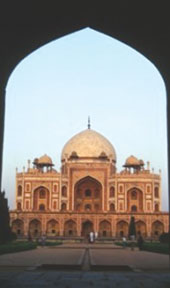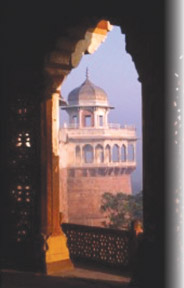|
Photographic exhibition:
'Islamic monuments of India'
An exhibition of photographs of Benoy Behl and Abhinav Atris titled
"Islamic Monuments of India" organised by Indian Cultural Centre in
Colombo will be held from February 9-13 from 7 p.m. to 9 p.m. at J.D.A
Perera Gallery, Horton Place, Colombo 7.
  The exhibition will be inaugurated by Rauff Hakeem, Minister for
Justice at 6.00 pm on February 8 at J.D.A Perera Gallery. The exhibition will be inaugurated by Rauff Hakeem, Minister for
Justice at 6.00 pm on February 8 at J.D.A Perera Gallery.
Ashok K. Kantha, High Commissioner of India will preside over the
function. The exhibition will remain open from 11 am to 7 pm from
February 9 - 13.
The exhibition contains 45 photographs of elegant historical
monuments of Islamic architecture that are spread in various parts of
India.
India has an architectural tradition that travels deep into the
history, as old as the human civilisation itself; these photographs will
definitely narrate how philosophy and the lifestyle prevalent at a
particular phase in history affect the style of architecture.
The Indian mainland was exposed to the philosophy and faith of Islam
as early as seventh century AD Several marvels starting from the city of
Delhi, including the celebrated Quwattul Islam mosque, Qutab Minar, the
tomb of Balban, Hauj Shamsi, Alai Darwaza , the lesser known but
exquisite Jamali Kamali complex and many more are part of the
exhibition.With the passage of time, the regional kingdoms and
administrative units, emulating the imperial style, gave rise to a
number of variations in the form of Shargi style of Jaunpur, Deccan
style of Bijapur and Golcunda, the Malwa style, and several others. The
photographs on display will exemplify the regional variations in the
Islamic architecture also.
One can also observe how the garden was integrated with architecture
as a new innovation that later matured with the Tomb of Humayun, a World
Heritage site.
Sculptural embellishments are also found refinement in the
architectural traditions finding its pinnacle in the tomb of Ittimad ud
Daula and finally in the celebrated Taj Mahal at Agra.
The lively traditions that reverberated throughout history including
the Charminar of Hyderabad, Tomb of Safdarjang in Delhi, and Imambara of
Awadh, the Charminar of Hyderabad, Tomb of Safdarjang in Delhi, and
Imambara of Awadh, are a visual feast to the viewer. The photographers
have taken much care to bring forth the essential elements of Islamic
architecture through the photographs. |

